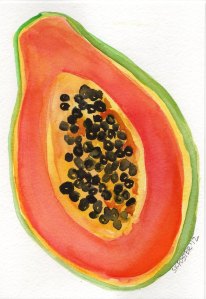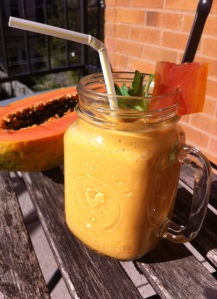
Recently I had the good fortune to visit the beautiful country of Sweden. Instantly, I was overcome by the natural beauty of my surroundings, it was love at first sight. However, I am not a winter person by nature, and I would probably have faired better during the summer months, not February. In any case, there I was, in the Artic Rim, mid-February having just come from Goa, India. I rocked off the plane in flip-flops, a tee & jeans, it was -10 Celsius in Stockholm, mild in comparison to where I was heading. I thought to myself “oy, mandatory shopping was in order” but that would be no problem, shopping is always an easy to-do for me and coupled with the kindness of many friends along the way I started to accumulate a Parka, socks, boots, hats, gloves, scarves, and hideous hand me down sweaters that proved to be necessary for survival, as well as local handmade honey. As I started to warm up I couldn’t help but think “what the f*ck I am doing here, it’s so f*ing COLD! However, crazily enough and difficult to admit, I grew to love the climate, it was surprisingly good for my skin, and my lungs felt released of all the heat and humidity stored from Asia, it was as if I could feel my Pitta fire burning out and cooling down. I acclimated quickly and took to the great outdoors.
I have taken away many fond memories from Sweden. The things that stand out the most include a Swedish word or two, road trips, wishing I had taken more pictures, vortexes, sauna world, caviar, windburn, a deep love for all of those that shared the journey with me, and of course, Chaga, a fascinating super herb that I can’t seem to get enough of. I will always cherish the lovely people who I was lucky enough to meet during my travels, especially my friend Magnus who introduced me to the medicinal mushroom known as Chaga that grows on the gallant white birch tree indigenous to the area.

Chaga appears as a black charcoal like growth that emanates from the white birch tree. I had never heard of it. We decided to go out and explore and forage for Chaga. Our mushroom hunting ended abruptly when surprisingly enough there was some Chaga growing on one of his beautiful birch trees right in the middle of the front yard. I couldn’t believe our luck. This was no short of a miracle, as Chaga is not that prevalent. February is probably not the best time for harvesting Chaga, it would have more easily come off of the tree if thawed by the summer sun but none-the-less we eventually sawed it off let it thaw and eventually grounded it up for tea. The Chaga was an earthy tasting concoction that I have been consuming daily ever since. I have been exploring it in a variety of different ways in my test kitchen. My interest was instantly peaked on this super herb and after a little research I was astounded by the myriad of health benefits claimed by this ancient medicinal mushroom residing primarily in the Northern Hemisphere. I continue my research, reading everything I can find on the subject. I always keep a batch of Chaga tea in the frig to cook with, whip up a smoothie or just enjoy it on its’ own. Here are some interesting factoids on the fungus.
Chaga is known as the “King of Medicinal Mushrooms.” Different from other mushrooms, as it is densely configured with antioxidant pigments. In fact, Chaga is the most nutritionally dense of all tree growths. Unlike common mushrooms that are soft, Chaga is hard, wood-like, and at it’s core has an almost cork-like quality to its’ appearance. Many references from numerous ancient cultures have called it the “Gift from God” the “Mushroom of Immortality” the “Diamond of Life” and even the “King of Plants” from the Chinese, which is a strong statement from a culture where plants and herbs are the backbone of their traditional medicine.
Benefits of Chaga
- Balances the immune system, optimizes the natural resistance against diseases and infections
Chaga is a natural BRM (Biological Response Modifier). It not only stimulates the body’s immune function when necessary, but can also slow it down when it’s overactive. In short, it will normalize the immune function, what classifies Chaga as an adaptogenic. The beta-glucans appear to be mainly responsible for that property, but many researchers believe it is actually the synergy between several, if not all constituents that is responsible for the full range of this adaptogenic action. Because of this property Chaga can be used to neutralize the side effects of pharmaceuticals, to compensate the age-related decline of our immune function, to neutralize genetic immune-disorders (like many auto-immune diseases) and, in general, to help us to deal with all the stresses of modern life. Stress (mental, physical, chemical, environmental – the change of seasons, urban life, pollution, etc. ) has an enormous negative impact on our resistance.
- Anti-inflammatory, anti-viral
These properties are linked to the immune supporting properties, of course. Apart from that, the antioxidants in Chaga can have a positive effect on inflammations. Betulinic acid (a unique component of Chaga) is currently being researched for its anti-HIV properties.
- Anti-ulcer, anti-gastritis properties
In folk medicine Chaga was used often to treat gastritis and related gastrointestinal problems. Again, the immune support of Chaga plays an important role here, both in treating and prevention of these problems, but betulinic acid and the phytosterols present in Chaga also play a role. Most ulcers are caused by bacteria such as Helicobacter pylori. A well functioning immune system will be able to deal with this pathogen.
- Anti-cancer adjuvant – decreases the side effects of chemo-therapy and other aggressive medication
Chaga has proven to be very effective in supporting standard cancer treatments such as chemo-therapy and radiation. It can compensate the devastating effect these treatments can have on the immune system (causing side effects like nausea, insomnia, poor appetite, fatigue, etc. – these side effects are often the result of a compromised immune function.) It helps preventing metastasis (cancer cells traveling through the bloodstream should be neutralized by the immune system before they can cause harm). Chaga can significantly contribute to the quality of life during and after treatment this way.
Furthermore, research indicates that Chaga itself also has anti-cancer potential, in particular during the early stages of cancer. The betulinic acid and some of the phytosterols present showed the ability to kill cancer cells directly. How this works exactly is the subject of several theories. So Chaga has both an indirect (by stimulating the immune system to battle cancer-cells) and direct (by causing apoptosis [=programmed cell death]) effect during cancer treatments. Anti-tumor activity was only found in extracts prepared by lengthy heating or decocting, infusions prepared by steeping the raw material where not active against the tested tumors.
- Anti-oxidant properties, revitalizing, anti-aging
A high quality extract should include the sclerotium ( the black outside layer ) of the Chaga. This is important, because this sclerotium contains a massive amount of a specific fungi-melanin, giving good extracts a very high level of anti-oxidants and turning Chaga into a powerful anti-aging tool. Research showed DNA-regenerating and re-vitalizing properties. The whole body will benefit from this; you will look better (skin and hair) and your organs will function better.
Antioxidant power can be expressed in an ORAC-value (Oxygen Radical Absorbance Capacity).
- Normalizes cholesterol levels, beneficial for the cardiovascular system, supports a healthy blood pressure
Research showed betulinic acid (a compound unique to Chaga) to be able to break down ‘bad’ cholesterol in the bloodstream. Besides that the ß-glucans, part of the polysaccharides in Chaga also have a proven positive effect on cholesterol levels. By normalizing those levels Chaga contributes to lowering high blood pressure and promotes a healthy cardio-vascular system: less plaque, stronger arteries.
- No side effects and no contra indications
One of the many benefits of using a full-spectrum Chaga extract is that it has no side effects at all. Chaga is merely stimulating the body to heal itself. There is no potential disturbance of the body’s chemical and hormonal balance. This makes medicinal mushrooms like Chaga the ideal supplement for everybody. The only contra-indication is immune suppressing medicines (e.g. cyclosporin containing products, used after a transplant). Never use medicinal mushroom extracts together with this type of medication – the immune modulating effect might neutralize its workings.
Source: Oriveda Labs of Holland
In addition, Chaga contains numerous B vitamins, flavonoids, phenols, minerals, and enzymes. It is also one of the world’s densest sources of pantothenic acid a vitamin needed by the adrenal glands as well as digestive organs. It also contains riboflavin and niacin in significant amounts.
Chaga contains wild-source minerals and is particularly high in copper, calcium, potassium, manganese, zinc, and iron. Yet, its most potent ingredient is a special substance known as superoxide dismutase (SOD). This is an enzyme with great potency. Its function is to halt oxidation, especially the toxicity of a free radical known as singlet oxygen. This is the type of oxygen responsible for oxidizing and damaging tissues, which results in aging. It is the same oxygen that rusts a nail. SOD blocks this damage by quenching the singlet oxygen free radical. The SOD content per gram of Chaga is exceedingly higher than any other antioxidant currently known. Like to the tune of 50,000 x’s higher.
Chaga has been around for thousands of years. Numerous studies have been done and can be found at http://www.ncbi.nlm.nih.gov/pubmed
If you live outside of the Northern rim or don’t vacation mushroom hunting in Siberia, you can source Chaga on the web. Not all products are created equal, and I have only used my own wild harvested Chaga to date. I am however a fan of David Wolfe, and he sells Chaga in a variety of different forms on his website www.longevitywarehouse.com Again, I have not tried his Chaga and I do not recommend anything that I haven’t loved, touched, tried and enjoyed. My experience with Chaga thus far has been an adventure of wonder, fascination and great joy, I can only hope to have peaked an interest in you about the many benefits of Chaga. Try Chaga today.
You can count on the fact that in the future we will be sharing Chaga recipes that earn our respect in the test kitchen. Here is one I have been exploring & really like.
Chaga Smoothie

Makes 1 serving
In a high speed blender:
Throw in 2 handfuls (2 c) of washed kale of choice, stems removed
1 whole apple, seeds removed
4 pitted dates
Cinnamon to taste
1 1/5 cups Chaga or liquid of choice
1 tablespoon raw Cacao (Chaga & Chocolate were meant for each other, however this is optional)
Blend until smooth & creamy. Enjoy & Happy Mushroom Hunting!
Y3
*Tastes like apple pie. With cacao added it has more depth.
 Did you know that the month of July is National Blueberry Month? With blueberry season in full force and lasting till the end of August now is the time to take advantage of this wonderful blue gem. And when I say gem, I mean it – most of the power found in these little berries come from it’s deep rich color. That deep-blue hue is a by-product of flavonoids — natural compounds that protect the brain’s memory-carrying cells (neurons) from the damaging effects of oxidation and inflammation. Since blueberries are one of the best sources of flavonoids you can find, it’s no surprise that this superfood has been shown to help preserve memory function. Blueberries also have a high water content helping to keep you, your cells and skin hydrated during this sticky summer month. Keep yourself hydrated this morning with a Blueberry Dream Smoothie…it will definitely leave you wanting more berries!
Did you know that the month of July is National Blueberry Month? With blueberry season in full force and lasting till the end of August now is the time to take advantage of this wonderful blue gem. And when I say gem, I mean it – most of the power found in these little berries come from it’s deep rich color. That deep-blue hue is a by-product of flavonoids — natural compounds that protect the brain’s memory-carrying cells (neurons) from the damaging effects of oxidation and inflammation. Since blueberries are one of the best sources of flavonoids you can find, it’s no surprise that this superfood has been shown to help preserve memory function. Blueberries also have a high water content helping to keep you, your cells and skin hydrated during this sticky summer month. Keep yourself hydrated this morning with a Blueberry Dream Smoothie…it will definitely leave you wanting more berries!



















